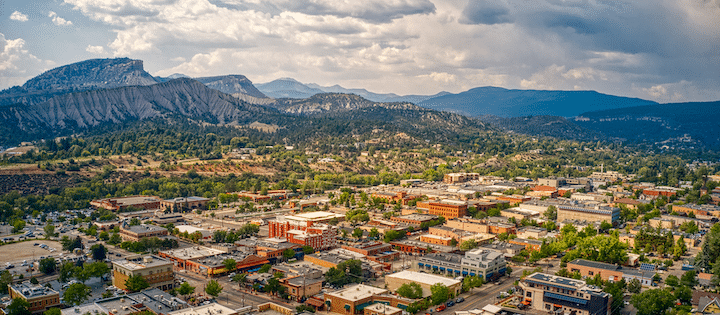VIEW A FULL VERSION OF THE COMMENTARY HERE [PDF]
By Luay Al Khatteeb
On the face of it, the advances made in 2016 by Iraqi forces in central and western Iraq are great news for the country’s oil and gas production. The earlier onslaught of the self-declared Islamic State (IS, a.k.a. ISIS) had been a clear negative for the sector, causing a real threat to northern oil producing fields, forcing substantial amounts of petroleum production and refining capacities to be shut off, disrupting exports, deterring investment, and siphoning scarce financial resources away from the industry to fund military needs. The retreat of ISIS offers a chance for the deadlocked Iraqi Council of Representatives (CoR) to refocus on much-needed economic reform. There are signs this may already be happening with the approval of new federal ministers for a neutral “technocratic” cabinet including the new minister of oil, Jabar al-Le’abi. This development comes after a long political struggle left the cabinet virtually ineffective and without an oil minister since April 2016.
Yet not only do the challenges facing Iraq’s oil and gas sector remain daunting, but ISIS’s retreat raises new ones. Despite dramatic gains in production levels achieved against immense odds in the past two years, low prices have kept hydrocarbon revenues at a fraction of their 2014 highs. In the Kurdistan Regional Government (KRG) and the oil-rich south, keeping up the momentum of production growth will prove difficult. Reconstructing the economies of ISIS-devastated territories will come at enormous cost. Meanwhile, the coalition of Kurdish, Shia, and Sunni forces that had united in a common fight against ISIS will come under renewed pressure. In order to unlock the billions of dollars in oil revenues necessary for dealing with 3 million internally displaced people (IDP), both Baghdad and the KRG must work, more than ever before, toward a new constitutional framework, revisiting the often overlooked 2005 Constitution and legally codifying revenue-sharing arrangements. This in turn can form the basis of new arrangements in Basra and Anbar Provinces, home to the northern and southern oil fields, allowing for national-level strategic planning to maximize Iraq’s broken “energy value chain.” Without this, rebuilding the freed territories will be mired in political deadlock.
Positive Developments
Two years after the beginning of their campaign, ISIS forces have been pushed back from the cities of Tikrit and Ramadi, and Fallujah and Hit in the western province of Anbar, and are expected to be soon expelled from Al Qaim (on the Syrian border), villages south of Mosul, and perhaps even Mosul itself. Therefore, most of western and central Iraq has been liberated, and it has become clear ISIS cannot hold terrain in the face of large Iraqi army and the Popular Mobilization Units (PMU, a.k.a. Hashd al Shaabi volunteer forces). However, the Mosul battle is expected to be protracted and may well go into 2017.
On the oil and gas production front, there has also been some encouraging developments. Since the beginning of the ISIS campaign, Iraqi production has soared from 3.3 mb/d in June 2014 to an all-time high of 4.3 mb/d in July. This has been achieved through a combination of ad hoc, fragile agreements between the KRG capital of Erbil and Baghdad on how to split oil export revenues, and the ingenuity and resourcefulness of the international oil companies (IOCs) working in southern Iraq under crippling budget constraints. Although an ambitious water injection scheme originally meant to maintain pressure at the giant Rumaila and West Qurna fields—the Common Seawater Supply Project (CSSP)—has failed to get off the ground, IOCs have worked on their own water injection facilities and managed to take Iraq output (excluding the KRG) to 3.2 million in bpd in July. This has earned the federal government $3.744 billion—despite significant cuts to capital expenditures mandated by the Ministry of Oil.
On the gas front too, Baghdad has had some good news with the advent of exports of condensate (a by-product of gas treatment) and liquid petroleum gas (LPG). In July, a shipment of 2,000 tons of LPG out of Basra made headlines after it was announced that southern Iraq’s LPG requirements had now been met by the Basra Gas Company (BGC), a joint venture among Iraq’s South Gas Company (51 percent), Shell (44 percent), and Mitsubishi (5 percent), negotiated without much transparency or competition between 2007 and 2010. The project’s grand aim is to eliminate gas flaring in southern Iraq by 2022 (an initial target date of 2016 was scrapped). Flaring causes pollution and respiratory problems, and wastes at least 1.8 billion cubic feet of gas a day. It costs Iraq far more in “opportunity cost” and revenues, as fuel oil and expensive liquid are burned and reduce power station efficiency, eating into potential exports and refined products. Thus, news in February that natural gas from the Majnoon oil field in southern Iraq would go toward electricity generation was welcomed by many, despite being several years behind schedule.
The Challenges of Reconstruction
Against this backdrop of encouraging developments, the advances of Iraqi troops offer both challenges and opportunities. In Anbar Province, in western Iraq, now that the provincial capital, Fallujah, is liberated, the provincial government will start to negotiate with Baghdad on reconstruction and economic development. Once Al Qaim is liberated on the Syrian border, perhaps only a matter of time, this could include the resumption of the Akkas gas field development, where the operating foreign oil companies had declared force majeure. Plans for oil pipeline exports via Amman, Jordan, have also been revived, which may be a wise additional export route given the current uncertainty in Turkey.
Reconstruction needs are acute. But the success of these attempts is far from assured. Anbari residents will need to feel invested in protecting energy infrastructure. In order to revitalize the vast Akkas gas field, clear and constitutionally mandated arrangements must be devised.
In the north, sectarian rivalries over Kirkuk and neighboring oil-rich territories could flare up and undermine Erbil and the KRG’s Peshmerga. The latter are eyeing further territorial gains after seizing virtually all disputed areas, with Massoud Barzani claiming this has “implemented” Article 140 of the constitution, although the article calls for a referendum in disputed territories to determine their status.
The chances of a three-way conflict are real. Government forces, including the Popular Mobilization Units, may try to regain control over previously occupied land, raising the risk of clashes with the Peshmerga, which last occurred over three days in April 2016. At the same time, a renewed Sunni insurgency is possible, meaning Shia-led PMU volunteers could be facing off Kurdish Peshmerga while all sides come under attack from ISIS infiltrators. At the time of the April clash, violence was ended following emergency talks between Kirkuk governor Najmaldin Karim and Badr Organization leader Hadi al Ameri. In this respect, ongoing communication is key.
This is not the only flashpoint. Centrifugal pressures may build within the Kurdish coalition itself, opposing Kirkuk, dominated by the Patriotic Union of Kurdistan (PUK), which will likely seek to deal directly with Baghdad; and Erbil, dominated by the Kurdish Democratic Party (KDP). The potential for intra-Kurdish struggle, including potentially a return to the Kurdish civil war of the 1990s, will be complicated by the diverging alliances of the KDP and PUK, since the KDP will likely maintain its long-term alliance with Ankara’s ruling party (AKP), and the PUK will likely remain closer to Iran and Shia parties in Baghdad. This may become increasingly complicated as Erdogan’s government becomes more unpredictable in the aftermath of the July 15 failed coup attempt, and while in Iran Kurdish separatists have recently clashed with security forces.
Exacerbating this tension is the fact that the KDP has long sought to dominate the energy sector and monopolize the political process, banishing the Gorran (“Change”) movement’s ministers and the parliament speaker from parliament. This has led to a firm Gorran–PUK alliance, meaning that opposition parties now control constituencies of oil- and gas-rich assets in Sulaymaniyah and Kirkuk (where most of the Kurdish Region of Iraq’s (KRI) proven hydrocarbon reserves are located), but these parties lack access to revenue accounts, which are overwhelmingly controlled by the KDP.
According to PUK MP Ala Talabani, Gorran and the PUK may even merge, faced with ongoing attempts by the KDP to retain maximum control over the energy sector and with an ongoing rift within the PUK following the illness of Jalal Talabani, PUK founder and former Iraqi president. This would present a long-term challenge to KDP energy sector dominance, especially considering PUK prominence in Kirkuk. The KDP are therefore attempting to preempt this challenge, with Iraqi Minister of Finance and KDP member Hoshyar Zebari heading the negotiations of a new exports and revenue deal that would split Kirkuk oil revenues fifty-fifty.
According to sources close to the negotiations, all members of the recent KRG delegation in Baghdad proposing such a deal were from the KDP. The KDP have also been concerned by a proposed federal plan to truck oil exports from Kirkuk through Iran in the advent of talks with Erbil collapsing. Such a plan would be costly in terms of transport, but would at least guarantee revenues for Baghdad. The current deal being discussed would help prolong the KDP’s control over exports, particularly considering Kirkuk oil’s value has increased in the region after the Taq Taq downgrade. The KDP are also attempting to mend fences with Baghdad and receive more revenue on their exports, which are heavily discounted due to the risk of litigation from Baghdad for buyers. If they can achieve respite from legal threats over exported oil, which occurred as recently as late August, the Kurds hope a deal may pave the way for a revenue and export arrangement in the 2017 budget. But they will likely face a sense of déjà vu if, as before, deals are based on unrealistic projected oil prices in the budget, weak transparency, and a lack of auditing, meaning arrangements collapse amid disputes.
Meanwhile, in the South
Even as new threats emerge in the newly liberated territories, challenges in the south and Iraq’s wider energy sector remain daunting. In the oil-rich provinces of Basra, Thi Qar, and Missan, although security is relatively good, the financial position is not as healthy as the IOCs might wish. The federal government has yet to engage with the operating joint ventures to negotiate contracts and commercial terms, as it finds itself unable to maintain current quarterly repayment levels.
Despite the remarkable production gains of the last two years, the failure of the Common Seawater Supply Project—originally designed to support production at Rumaila and West Qurna but which is also required to develop the smaller southern fields of Nassiriya, Luhais, Nahr Bin Umar, Artawi, and Tuba—is holding up further increases. Baghdad has relaunched the CSSP as the Integrated South Project and wants to attract investors and operators. Rumaila and West Qurna have already seen decreased production due to the long-delayed CSSP, and it is hoped that Integrated South Project can raise production. If not, Iraq faces the risk of output declines, a highly unwelcome prospect.
The reconfiguration of CSSP, which has been necessary since its initial price, originally to be largely funded by the Ministry of Oil, was estimated at $10 billion.
Recent progress in natural gas production and LPG exports, as encouraging as it may be, also falls far short of requirements. Flaring remains lamentably high because of delays implementing the work, with two-thirds of associated gas still flared. Due to insufficient gas capture, Iraq must import more fuel for power generation which, when sold at subsidized prices, costs the Iraqi government in the region of $10 billion a year. Over the summer, Iraq’s fuel consumption peaked at over half a million barrels a day, much of it imported because the country still lacks adequate refining capacity.
With ISIS completely destroying the 300,000 bpd refinery at Baiji, the crisis is now especially acute for Iraq’s northern provinces, including the Kurdish Region of Iraq.
Revenues from LPG exports also have yet to accrue to the state. Proceeds from the first shipments of LPG and condensate will be going to Basra Gas Company, under the terms of the deal, to pay off initial costs. After seven years of relative stability in southern Iraq, and oil revenues that exceeded $80 billion in 2011 alone, the fact that BGC has only now begun to export is a testament to a lack of strategic foresight and slow project execution at Iraq’s Ministry of Oil.
Funding Shortfall
While further production gains in the south depend in part on the uncertain success of the Integrated South Project, the benefits of past output increases have been more than offset by the oil price decline. As mentioned earlier, IOC success in lifting southern production to 3.2 million bpd in July earned the federal government $3.744 billion in revenue despite government-mandated cuts in capital expenditures, but Iraq’s federal budget pales in comparison with those when oil was over $100. Iraq’s oil revenues reached just $49 billion last year, compared with $100 billion in 2012.
Any progress now is highly uncertain. Iraq assumed an oil price of $45 per barrel in its 2016 budget, compared with an average realized price so far this year of just $29, meaning that revenues are falling far short of the required monthly sum of $5 billion.
Baghdad’s struggle to maximize revenues amid the price collapse has made oil negotiations with the Kurdish Democratic Party all the more sensitive. Even more than Iraq, the KRG is financially embattled. Its strategy of using oil exports to fund independence appears to have met head winds.
The first setback was the downgrading of the Taq Taq oil field, which saw estimated reserves in the region’s flagship field cut by almost half. Genel, one of the field’s main operators, was the first IOC to contract directly with the KDP, and is seen by some as the pioneer in the region’s oil strategy. But its troubles have worsened this year as its expected output from Taq Taq was revised down by 10 percent for 2016.
Other huge obstacles challenge the KRG’s energy strategy. Despite having suffered setbacks on the battlefield, ISIS remains a threat to production. A recent reminder of the vulnerability of KRG oil infrastructure was when ISIS militants attacked the Bai Hassan oil field in KRG and knocked 175,000 bpd of exports off line. Elsewhere in the region, the Kurds’ main export pipeline through Turkey was sabotaged in late February, knocking out 600,000 bpd of exports for several weeks. This caused further financial injury to Gulf Keystone, another small IOC in the region that already had faced the threat of bankruptcy due to late payments from the KRG’s Ministry of Natural Resources. Other problems may be self-inflicted, such as the multibillion-dollar legal battle between the MNR and Dana Gas relating to contractual disputes for work at the Khor Mor gas field. In the Dana Gas case, the consortium of Crescent Petroleum, OMV, and MOL claimed the KRG was behind in $1 billion for delivered gas and $1 billion in capital outlays, with the case won in a court of arbitration by the consortium in July 2015.
Such developments have had a chilling impact on the energy investment climate in an already financially unstable region. Some estimates put KRG debt over $20 billion—including money owed to IOCs, foreign lenders, such as Turkey who lent the government $1 billion, and banks—an astonishing financial burden for a region of only 5 million people.
In both Baghdad-administered Iraq and the KRG, budget shortfalls are becoming a threat to social and political stability. Both regions have been rocked by protests over long-delayed salaries and pay cuts. Iraq’s parliament was stormed in April and May of 2016. In October 2015, rioting in the KRG contributed to the current Kurdish political rift. So far, casualties from social unrest have been in the single digits, but should serve as a warning to political parties across Iraq that reforms must be pushed through. If not, the need to redivert security forces in Baghdad or Erbil could delay the end of ISIS.
Constitutional Challenges
The shared thirst for revenue of Baghdad and Erbil calls for a lasting fix of the constitutional framework of the oil and gas sector. This crisis in KRG will refocus Kurdish attention on the oil of Kirkuk, which still has an estimated reserve of 9 billion barrels of oil with an API of 34.2, meaning that by volume it will produce a higher yield of refined petroleum products than southern Iraq’s heavier grades.
From the perspective of Baghdad, the revenue shortfall and the difficulties in implementing IMF-requested austerity measures will be politically unpalatable. In the wake of Baghdad’s budgetary crisis, one prominent MP, Hanan al Fatlawi, claimed she would bring her supporters to the streets were there to be another Baghdad–Erbil oil deal. In this respect, the matter goes to the heart of political stability in both Arab Iraq and the KRI. Politicians like Fatlawi take a very hard line on Kurdish exports.
As noted, the next step will involve Kurdish political parties maneuvering with Baghdad to arrange a new oil deal, and perhaps a share of the $5.4 billion (and perhaps up to $20 billion) that the IMF will lend Iraq. The new revenue and exports deal between Baghdad and Erbil, which is partly intended to support the passing of the 2017 budget law, may effectively recognize independent Kurdish exports, with Baghdad possibly adjusting the budget allocation accordingly. Such arrangements are a potential distraction from the real problem at hand for two regions facing regional unrest (and resultant threats to oil export infrastructure), domestic social unrest, and pressures for reform (public sector wages have comprised over 70 percent of both Baghdad and Erbil’s expenditures), among many other challenges.
The pressing challenge is the absence of a constitutional framework, and a constitutionally called-for revenue sharing law, which has been delayed for years. This is why the deals between the two opposing ministries of oil, between 2009 and 2014, have broken down, because they are ad hoc arrangements designed to circumvent legal support at the federal level.
An overarching framework for revenue sharing and oil and gas development rights would strengthen Iraqi federalism, which as of yet exists only on paper in the Iraqi constitution. If properly implemented, this could lead to mutually beneficial arrangements across the length and breadth of the country, strengthening the federation.
For Iraq to proceed with any solution, all factions have to agree on a constitutional arrangement and stay away from short-lived “handshake” deals. The November 2014 revenue and exports deal between Baghdad and Erbil fell apart because of a lack of independent auditing, as Baghdad claimed the Kurds were not transferring the agreed amounts of oil to Iraq’s oil marketing company SOMO, while the capital struggled to transfer the agreed amount of revenue due to the budget crunch. Based on an overoptimistic projection of the oil price in 2015, the deal subsequently proved highly unpopular among hard-line politicians in Baghdad and Erbil. At the core of this problem is the difference between an arrangement of power that is merely decentralized, and federalism, where federal arrangements are usually entrenched in the constitution and only changeable by specific processes. Until Baghdad and the Kurds can agree on the exact terms for independent exports that are constitutionally supported, deals are at the mercy of Iraqi politics, which has unfortunately been characterized by parliamentary boycotts, with Sunni MPs boycotting 2012, 2015, and early 2016, Kurds boycotting in spring 2016, and various Shia political parties following suit, including a “sit-in protests. Unless a deal has the consent of parliament, it stands little chance. Sunnis may protest unless they are given more rights to oil and gas development and exports (for example, gas from Akkas), and southern provinces may once again demand more leeway on development, revenues, and exports.
In that respect, no amount of IMF finance, disbursement of revenue in a new sharing arrangement, or revenue to the central government will bring lasting reform and cooperation. In fact, the lessons of Iraq’s high oil revenue years show such an influx of funds that they may even deter cooperation in the absence of institutional improvement. In a nutshell, until a federal petroleum law and revenue-sharing law are passed, all contesting factions should avoid illegal political deals, adhere to the federal constitution of Iraq, and honor federal budget law and federal auditing, with 100 percent transparency.




